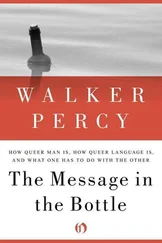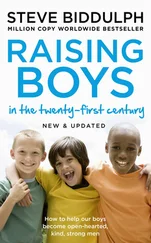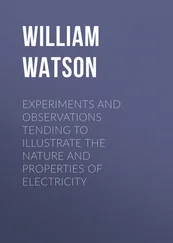Mark Changizi - Harnessed - How Language and Music Mimicked Nature and Transformed Ape to Man
Здесь есть возможность читать онлайн «Mark Changizi - Harnessed - How Language and Music Mimicked Nature and Transformed Ape to Man» весь текст электронной книги совершенно бесплатно (целиком полную версию без сокращений). В некоторых случаях можно слушать аудио, скачать через торрент в формате fb2 и присутствует краткое содержание. Год выпуска: 2011, Издательство: Perseus Books Group, Жанр: Старинная литература, на английском языке. Описание произведения, (предисловие) а так же отзывы посетителей доступны на портале библиотеки ЛибКат.
- Название:Harnessed: How Language and Music Mimicked Nature and Transformed Ape to Man
- Автор:
- Издательство:Perseus Books Group
- Жанр:
- Год:2011
- ISBN:нет данных
- Рейтинг книги:5 / 5. Голосов: 1
-
Избранное:Добавить в избранное
- Отзывы:
-
Ваша оценка:
- 100
- 1
- 2
- 3
- 4
- 5
Harnessed: How Language and Music Mimicked Nature and Transformed Ape to Man: краткое содержание, описание и аннотация
Предлагаем к чтению аннотацию, описание, краткое содержание или предисловие (зависит от того, что написал сам автор книги «Harnessed: How Language and Music Mimicked Nature and Transformed Ape to Man»). Если вы не нашли необходимую информацию о книге — напишите в комментариях, мы постараемся отыскать её.
Harnessed: How Language and Music Mimicked Nature and Transformed Ape to Man — читать онлайн бесплатно полную книгу (весь текст) целиком
Ниже представлен текст книги, разбитый по страницам. Система сохранения места последней прочитанной страницы, позволяет с удобством читать онлайн бесплатно книгу «Harnessed: How Language and Music Mimicked Nature and Transformed Ape to Man», без необходимости каждый раз заново искать на чём Вы остановились. Поставьте закладку, и сможете в любой момент перейти на страницу, на которой закончили чтение.
Интервал:
Закладка:
Hits and slides are the only physical interactions among solid objects that we regularly experience, and they are certainly the primary ones our ancestors would have experienced. We are land mammals. Splashes, involving a solid and a liquid, are neither hits nor slides, and although they could shape the auditory system of otters, seals, and whales, they’re unlikely to be of central significance to our auditory system.
With the two kinds of solid-object physical interaction out of the way, we are left with the final fundamental constituent of these natural events: rings. A ring is what happens to a solid object after a physical interaction, that is, after a hit or a slide. When a solid object is physically impinged upon, it vibrates and wobbles, and although one can almost never see these vibrations, one can hear them. You can tell from the sound whether your pen is tapping your desk, your computer, or your coffee mug, because the same pen hit leads to different rings; you may also be able to tell that it is the same pen hitting the three different objects.
Different objects ring in distinct “timbres,” a word (pronounced “TAM-ber”) that refers to the overall perceptual nature of the sound. For example, a piano C and a violin C have the same pitch, or frequency, but they differ in the quality or texture of their sound, and timbre refers to this. Most objects have very short-lived rings—unlike the long-drawn-out ring of a gong—but they do ring, and once you set your mind to noticing, you’ll be amazed to hear these rings everywhere. And it is not just hits that ring, but slides as well. The vibrations that occur when any two objects hit each other will have many similarities to the vibrations resulting from the same two objects sliding together, so that we can tell that a coffee mug is being dragged along the desk because the ring possesses certain features also found in the ring of a pinged coffee mug.
Hits, slides, and rings are, therefore, nature’s primary phonemes (see Figure 3). They are a consequence of how solid physical objects interact and vibrate. Although these three kinds of sound are special in the lexicon of nature, there is nothing requiring language to carve sounds at these joints. Dog woofs, cat calls, horse neighs, whale song, and bird song do not carve at these joints. Neither does the auditory communication of a fax machine. But if a language is to be designed to harness the human auditory system, then it will be built out of the sounds of hits, slides, and rings.

Figure 3. The three principal constituents of physical events: (a)hits, (b)slides, and (c)rings. They sound suspiciously similar to plosives, fricatives, and sonorant phonemes in human languages.
Are human languages built out of these constituents? Yes. In fact, the most fundamental universal of human speech is that phonemes, the “atoms” of speech, come in three primary types, and these types match nature’s phonemes! Language’s hits, slides, and rings are, respectively, plosives, fricatives, and sonorants.
Plosives—like b , p , d , t , g , and k —are found in every language, and consist of sudden, explosive, high-energy inceptions. Plosives sound like hits (even embedding their ex plosive hitlike starts in the name). Figure 4a shows the time-varying frequency distribution for the sound made when I hit my desk with a small plastic cup, and one can see that the hit begins with a sharp vertical line indicating the presence of a wide range of frequencies at the instant of the collision. That same figure shows, on the right, the same kind of plot when I made a “k” sound. Again one can see the sharp edge at the beginning of the sound, characteristic of a hit. (Also note that, in English, at least, one finds many plosive-filled words with meanings related to hits: bam, bang, bash, blam, bop, bonk, bump, clack, clang, clink, clap, clatter, click, crack, crush, hit, klunk, knock, pat, plunk, pop, pound, pow, punch, push, rap, rattle, tap, and thump.)
Languages have a second principal kind of consonant called the fricative, such as s , sh , th , f , v , and z . They are extended and noisy, and sound like slides. (In fact, the very word “fricative” captures the friction nature of a slide.) And just as slides are rarer than hits, fricatives are less common than plosives. All languages have plosives, whereas many languages (especially in Australia) do not have fricatives. Figure 4b, on the left, shows the frequencies of sound emanating from a small cup that I slid on my desk, and one can see that there is no longer a crisp start to the sound as there was for hits. There is also a longer duration of sound, all of it with a wide range of frequencies. On the right of Figure 4b is the same kind of plot, this one generated when I made a “sh” sound. One sees the signature features of a slide in fricatives. (Also note that in English, at least, one finds many fricative-filled words with meanings related to slides: fizzle, hiss, rustle, scratch, scrunch, shuffle, sizzle, slash, slice, slip, swoosh, whiff, whiffle, and zip.)
The third principal phoneme type used across human languages is the sonorant, including vowels like a , e , i , o , u , but also sonorant consonants like l , r , y , w , m , and n . Each of these phonemes has strongly periodic vibrations, and has a complex spectral shape. Sonorants sound like rings. Figure 4c, left, shows the ringing after tapping my coffee mug. Only certain frequencies occur during the quickly decaying ring, and these frequency bands are characteristic of the shape and material properties of my mug. To the right of that in Figure 4c is the signal of me saying “ka.” (The plosive “k” sound corresponds to the tap.) As with the coffee mug, there are certain frequency bands that are more active, and these patterns are what characterize the sound as an “a.”
Lo and behold! The principal three classes of phonemes in human speech sound just like nature’s three classes of phonemes. We speak in hits, slides, and rings!
Before getting overly excited by the realization that language’s phonemes are like nature’s phonemes, we must, however, address a worry: How else could we speak? What if human vocalization can’t help but sound like hits, slides, and rings? If that were the case, then the observations made in this section would have little significance for harnessing; culture would not need to design language to sound like hits, slides, and rings, because our mouths would make these sounds by default. We take this up next.

Figure 4. Illustration that plosives, fricatives, and sonorants sound like hits, slides, and rings, respectively. These plots show the frequencies on the y-axis, and time on the x-axis. Comparison of (a)hits and plosives, (b)slides and fricatives, and (c)rings and sonorants.
Tongue Wagging
When the Mars Rover landed on Mars, it bounced several times on balloon-like cushions; the cushions then deflated, allowing the rover to roll gently onto the iron-red dirt. If you had been there watching the bouncy landing, you would have heard—as you writhed in pain from decompression in the low-pressure atmosphere—a sequence of hits, with rings in between. And once the rover found a place to take a sample of Martian soil, it would have scraped debris into a container for analysis, and that scrape would have sounded like a slide, followed by a ring characteristic of the Rover’s scraping arm. Hits, slides, and rings on Mars! It is not so much that hits, slides, and rings are Earthly nature’s phonemes as much as they are physics’ phonemes. These sounds are the principal building blocks of event sounds anywhere there are solid objects interacting—even in our mouths.
Читать дальшеИнтервал:
Закладка:
Похожие книги на «Harnessed: How Language and Music Mimicked Nature and Transformed Ape to Man»
Представляем Вашему вниманию похожие книги на «Harnessed: How Language and Music Mimicked Nature and Transformed Ape to Man» списком для выбора. Мы отобрали схожую по названию и смыслу литературу в надежде предоставить читателям больше вариантов отыскать новые, интересные, ещё непрочитанные произведения.
Обсуждение, отзывы о книге «Harnessed: How Language and Music Mimicked Nature and Transformed Ape to Man» и просто собственные мнения читателей. Оставьте ваши комментарии, напишите, что Вы думаете о произведении, его смысле или главных героях. Укажите что конкретно понравилось, а что нет, и почему Вы так считаете.












